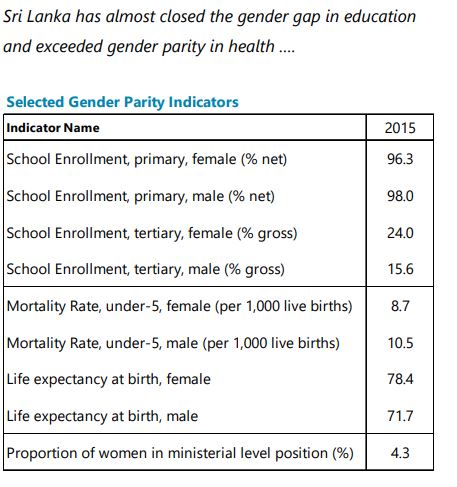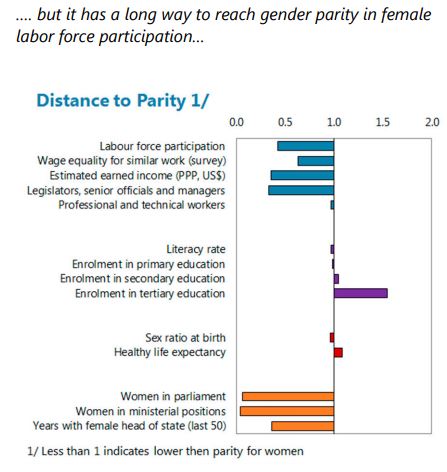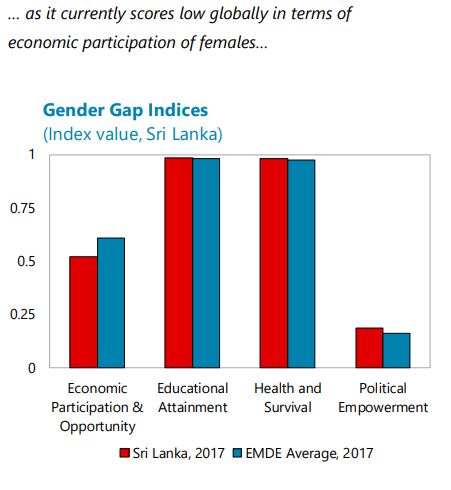Thursday, June 21, 2018
Alongside rising top incomes, the level of living of America’s poorest has fallen
From a new VOX posts:
“When the poorest gain, the lower bound, or ‘floor’, of the distribution of living standards rises. Using microdata spanning the last 30 years, this column argues that the floor in the US has been sinking, alongside rising top incomes. The floor would have fallen further without public spending on food stamps, which helped protect the poorest in the wake of the 2008 financial crisis.”
“Figure 1 gives our estimates of the floor before and after SNAP. Since the official poverty thresholds vary by family size and composition, it is simpler to express the floor as a proportion of the threshold. The mean post-SNAP floor is about 36% of the official threshold. For a family of four, with two adults and two children, the threshold was about $16.50 per person per day in 2015. The floor in that year’s prices is $5.89 a day post-SNAP, while the pre-SNAP value is $5.40. ”
From a new VOX posts:
“When the poorest gain, the lower bound, or ‘floor’, of the distribution of living standards rises. Using microdata spanning the last 30 years, this column argues that the floor in the US has been sinking, alongside rising top incomes. The floor would have fallen further without public spending on food stamps, which helped protect the poorest in the wake of the 2008 financial crisis.”
“Figure 1 gives our estimates of the floor before and after SNAP.
Posted by at 9:38 AM
Labels: Inclusive Growth
Wednesday, June 20, 2018
Coping with Natural Disaster Risks in Sri Lanka
From the IMF’s latest report on Sri Lanka:
“Sri Lanka has been prone to weather-related natural disasters, possibly reflecting climate change. While the government has started to build up resiliency against disasters by introducing disaster insurance schemes and increasing mitigation spending, it can further improve disaster preparedness by undertaking policy measures in the near term. First, a contingency budget for emergency cash support and infrastructure rehabilitation can be introduced within the budget. Second, the planned introduction of an automatic pricing mechanism for electricity, combined with well-targeted safety nets, can contain fiscal risks from droughts. Third, the risk management of disaster insurance schemes can be improved to maximize its effectiveness for post-disaster reconstruction while minimizing costs. Beyond the near term, there is a need to develop a comprehensive disaster risk financing strategy that is consistent with Sri Lanka’s debt sustainability, and build up capacity for innovative risk transfer approaches such as parametric insurance.”
From the IMF’s latest report on Sri Lanka:
“Sri Lanka has been prone to weather-related natural disasters, possibly reflecting climate change. While the government has started to build up resiliency against disasters by introducing disaster insurance schemes and increasing mitigation spending, it can further improve disaster preparedness by undertaking policy measures in the near term. First, a contingency budget for emergency cash support and infrastructure rehabilitation can be introduced within the budget.
Posted by at 1:53 PM
Labels: Energy & Climate Change
Female Labor Force Participation: A New Engine of Growth for Sri Lanka?
From the IMF’s latest report on Sri Lanka:
“Sri Lanka has been a trendsetter in the region in advancing gender parity in education and health. Yet, this has not been reflected in more active female labor force participation (FLFP), which is low compared to its emerging market peers and even some low-income developing countries in the region. Closing this gap is especially important as Sri Lanka faces an aging population with a labor force that could start shrinking as early as 2026. Given the potential for significant economic gains from integrating the female labor force into the labor market, the authorities’ Vision 2025 identifies policies to bridge this gap. Specifically, the Sri Lankan authorities aim to provide child care facilities, improve access to transportation, facilitate part-time and flexible work arrangements, improve maternity benefits for private sector employees, and increase access to tertiary education and vocational training. While these measures are steps in the right direction, Sri Lanka may also benefit from a more systematic approach through implementing gender responsive budgeting.”
From the IMF’s latest report on Sri Lanka:
“Sri Lanka has been a trendsetter in the region in advancing gender parity in education and health. Yet, this has not been reflected in more active female labor force participation (FLFP), which is low compared to its emerging market peers and even some low-income developing countries in the region. Closing this gap is especially important as Sri Lanka faces an aging population with a labor force that could start shrinking as early as 2026.
Posted by at 1:49 PM
Labels: Inclusive Growth
Housing Market in Sri Lanka
From the IMF’s latest report on Sri Lanka:
- “Credit growth decelerated gradually to 14.7 percent (y/y) in December 2017 from its 28.5 percent peak in July 2016. However, credit to construction continued to grow rapidly at around 22.5 percent in 2017, reflecting buoyant real estate markets for both personal and commercial properties. Land prices in Colombo appreciated by 10.4 percent (y/y) in December 2017. Real lending rates stood at above 5 percent for most of 2017 but increased to about 7 percent in February 2018 with the deceleration in inflation. “
- “The authorities viewed the financial system as well-capitalized and stable. They did not see systemic risks arising from credit to the construction sector but agreed on the need to remain vigilant, especially in high segments of the real estate market. “
From the IMF’s latest report on Sri Lanka:
- “Credit growth decelerated gradually to 14.7 percent (y/y) in December 2017 from its 28.5 percent peak in July 2016. However, credit to construction continued to grow rapidly at around 22.5 percent in 2017, reflecting buoyant real estate markets for both personal and commercial properties. Land prices in Colombo appreciated by 10.4 percent (y/y) in December 2017. Real lending rates stood at above 5 percent for most of 2017 but increased to about 7 percent in February 2018 with the deceleration in inflation.
Posted by at 1:31 PM
Labels: Global Housing Watch
Structural Transformation in Sri Lanka
From a new IMF country report:
“Sri Lanka has a compelling growth story. The economy has grown at an average of 5 percent over the last four decades, amidst the 30-year civil conflict, weather calamities, and swings in economic policy orientation depending on ruling parties’ ideology. Sri Lanka seesawed between protectionist and liberalization strategies: state control and import substitution in early 70s; two waves of liberalization in early 80s and 90s; closing up again in early 2000s at the height of the war; and then opening up again since the end of the war (text table below).”
“Strong economic growth has led to a significant decline in poverty rates (text table below). While a recent IMF study (IMF, forthcoming) finds that emerging markets experienced a significant increase in average growth rates in the 2000s, particularly in Asia, only half of these emerging markets are converging with developed countries in per capita income levels. Remarkably, Sri Lanka has halved its poverty gap over the last decade. Nevertheless, challenges in terms of inclusiveness, regional disparities, quality of education, and gender equality remain.”
“The government has ambitious plans to achieve upper middle-income country status in 2025 by transforming Sri Lanka in an Indian Ocean Hub for trade, investment, and services. Unlike the 70-80s when investment in the tradable sectors led the productivity boost, the post-war capital deepening was mainly driven by mega-scale public-financed infrastructure projects, which did not seem to result in immediate productivity gains, as reforms to enable the business environment lagged. Sri Lanka’s static export structure signifies an absence of competitive forces to drive trade dynamism, innovation, and diversification: for over two decades exports have remained concentrated on garments, tea, and rubber products with a declining share in global trade. Introduction of para-tariffs barriers during the last decade has effectively doubled the protection rate, making the present trade regime one of the most complex and protectionist in the world. Despite operating a complex and an expensive system of tax incentives to promote investment, FDI remains low.”
From a new IMF country report:
“Sri Lanka has a compelling growth story. The economy has grown at an average of 5 percent over the last four decades, amidst the 30-year civil conflict, weather calamities, and swings in economic policy orientation depending on ruling parties’ ideology. Sri Lanka seesawed between protectionist and liberalization strategies: state control and import substitution in early 70s; two waves of liberalization in early 80s and 90s;
Posted by at 9:51 AM
Labels: Inclusive Growth
Subscribe to: Posts











